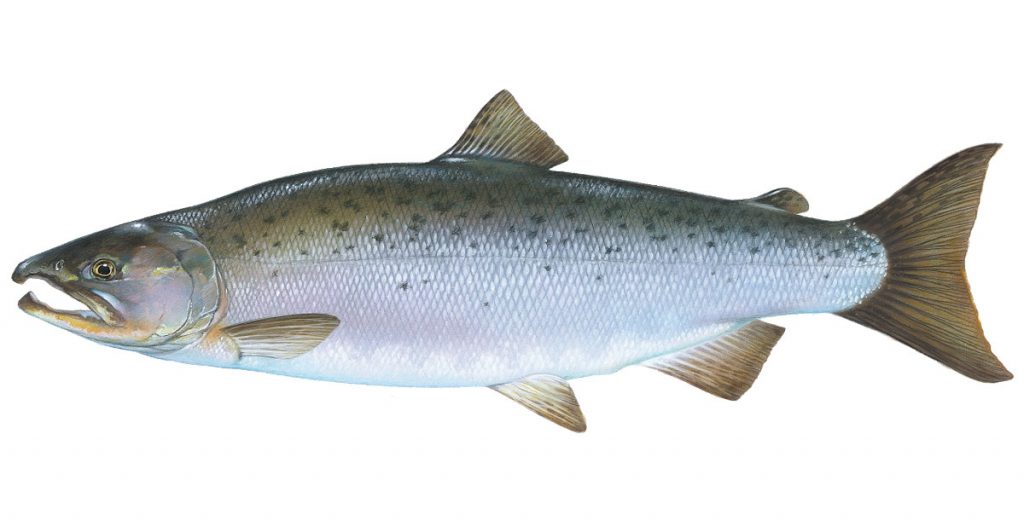Coho salmon

SPECIES INFORMATION
The coho salmon belongs to the Oncorhynchus kisutch group.
Types of fish that can be found
The coho salmon can be easily distinguished from the other species of fishes because of its light pigment of the lower jaw gumline. It has black spots on the back and the tail when it is in the ocean. It also has blue and green silversides.
The male that is spawning develops large teeth and hooked snout. The spawning coho will grow a dark pigment and will have reddish-brown color on its sides. The juveniles go back to the sea, and there it loses its camouflage marks and becomes dark with a light color on its belly which is similar to the ocean coho.
Type of fishing that can be done at the location
The net fishery catches the coho salmon. The coho salmon is a game fish in the waters of North America from July to December. It is also a popular sports fish in the northwest Pacific. It displays a reckless abandon of the lure and baits when it is in salt water, and this is what gives it its popularity. The fish lives in shallow waters and can be found near the beaches. This makes the fish species accessible to the anglers on the banks of the sea as well as when they are fishing on the boats.
SIZE
The average coho salmon weighs 3.6 kgs or 8 lbs or could be as large as 16 kgs or 35 lbs. The life span of this fish species is variable. The oldest fish in this species could be 5 years. The average size of the coho salmon is 9.4 cms or 24 inches, but there are some from this species that have reached an average size of even 108 cms or 42.5 inches.
RANGE
The range of the coho salmon is from the north Pacific range that is from the Anadyr River in Russia to the southward side towards Hokkaido in Japan. The coho salmon can be found in the Point Hope in Alaska and then southward to the Chamaly Bay located in Baja California. It then ranges down to Mexico.
HABITAT
The coho salmon live in the lakes and oceans. The younger fishes migrate into the lake and the ocean at night. Those fishes that stay in the freshwater for more than two years and then reach their sexual maturity stage are known as residuals, and they never spawn.
The habitat of the coho salmon is an anadromous species, and it spends its adult life primarily in saltwater. It then migrates into freshwater, and then it spawns. The residuals, however, are an exception. The adult coho salmon then migrates from the sea or the lake and then schools at the mouth of the river. It subsequently processed upstream when the precipitation increases the flow of water. The female will then find a spot and then dig a pit using her tail.
When the female makes her pit, then she drops her first egg deposit in it. The male coho salmon then will follow the female, and it then fertilizes the egg using its milt.
DIET
The young coho salmon inhabits the rivers and the lakes, and it feeds mostly on insects. When it migrates to the sea, then the young salmon will have a diet of planktonic crustaceans. As it grows and moves out further to the sea, the fish species starts to look out for the large species like jellyfish and squid to include them in its diet.
